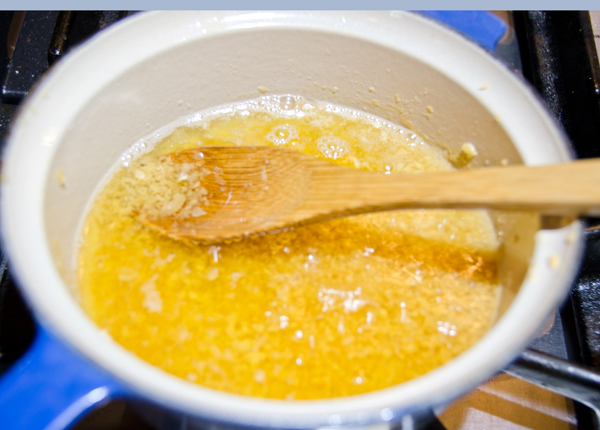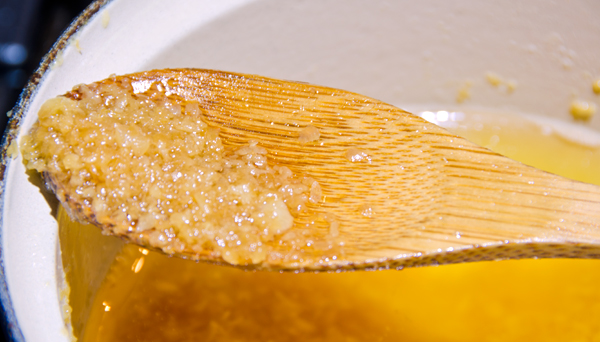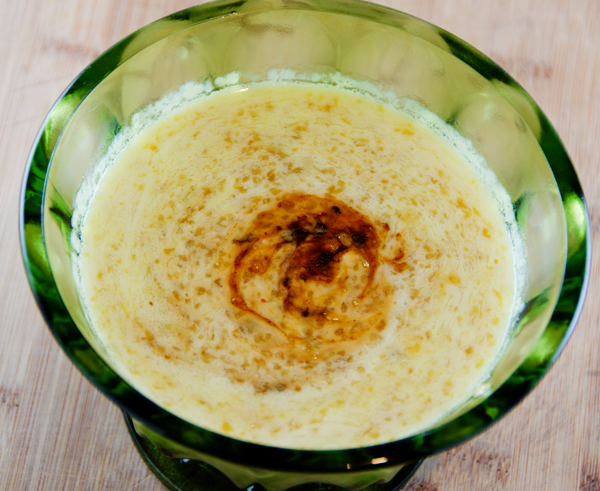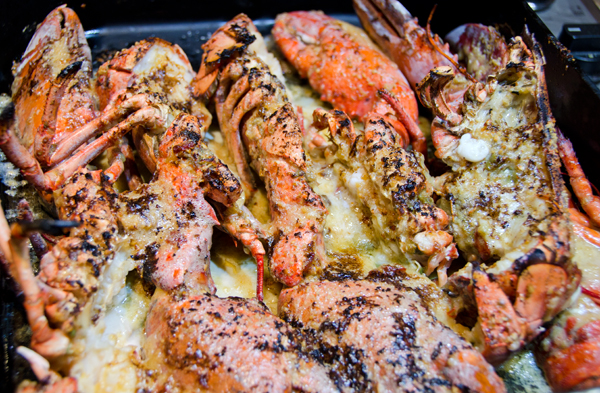Lobster is a once and a while treat for us and a sale at a local market was enough motivation to pick up a few and to pull out an old favorite recipe. When I was buying cookbooks on a regular basis and life was a bit simpler, I would occasionally try to cook my way through my latest purchase. Such was the case with the Rick Bayless cookbook, Mexico, One Plate at a Time.
Mexico, One Plate at a Time, written thirteen years ago is the fourth cookbook written by Mexican food authority, teacher, restaurant owner, cookbook writer and PBS television host, Rick Bayless. His motivation for writing this book was to help the average cook take the first steps toward understanding real Mexican cooking, not the Mexican American cooking so many of us are familiar with. He provides not only the history and culture behind some of Mexico’s classic dishes, he offers his best recipe for the classic and a contemporary take on the dish that brings it into the twenty-first century. The food stained pages attest to my efforts. I began by covering the basics, guacamole, salsa, moved into new territory with ceviches and found a new way to use the poblano chilis from our garden with delicious chiles rellenos. For entrees I tried the complex turkey mole, added red snapper vera cruz into our dinner rotation and discovered the rich, delicious roasted lobster tails with mojo mayo.
This lobster variation finds it’s roots in Seafood in Mojo de Ajo. He describes mojo de ajo as a bath of golden slow-cooked garlic that traditionally dresses shrimp or a white fish. Garlic, as with other foods (onions, cilantro) we might assume to be native to Mexico, actually were brought by the Spanish explorers of the sixteenth century. Most of us won’t be able to find the red-tinged ajo criollo that he recommends and Mexican cooks love, but it is important to find the freshest garlic available. Look for firm, plump heads that feel heavy for their size. A lighter head is a sign of dehydration. Also, stay away from garlic that is sending out green shoots, that garlic will most likely be bitter.
The garlic cooks in a good quality vegetable oil that will bubble gently at a very low simmer. This is where the mojo magic occurs, the sharp taste of raw garlic is mellowed and it’s sweetness emerges. Keep a watchful eye on your simmering pan, the final product should become the color of light brown sugar. If the garlic turns dark in color it will be bitter and inedible.
The dish reaches the next step when the cooled oil is added slowly to a base of egg yolks, fragrant lime juice and smoky chipotle peppers resulting in a lusicious mojo mayonnaise that will bring not only lobster but any seafood preparation to a new level.
As Mr. Bayless states at the beginning of his book, food, even a classic dish, is a dynamic evolving creation and he is certainly willing to adapt and accommodate his recipes for the time challenged modern cook. The cookbook version of the recipe for mojo de ajo requires peeling 3/4 of a cup of garlic cloves and a half hour of occasional stirring and temperature moderation of the slow cooked garlic. Two steps that require a certain amount of time and might have steered some (many) home cooks away from this recipe.
My recent observations both on his website, as well as a video from a Chicago block party segment he did on the Rachael Ray show from 2010 show how he has adapted the preparation of mojo de ajo from the original recipe in the book. Although he did mention using fresh garlic he also gave approval to peeled garlic from the supermarket as a reasonable substitute. He told the large audience that over the course of years he developed an easy way to make a large quantity of the mojo. Rather than chop the garlic by hand, he puts it in a plastic bag and crushes it with a rolling pin. The garlic is then placed in a square baking pan and covered with three cups of olive oil. After cooking for 45 minutes in a 325°F oven he adds some lime juice and cooks for another fifteen minutes. In his book Mr. Bayless originally expressed that oven cooking the garlic in oil would result in a less reliable product, it is now the standard for the recipe on his website The liquid gold, as he often refers to it, can be stored in the refrigerator for several weeks, making it well worth the effort the home cook would put into it. Mojo de ajo can also be used in vinaigrettes, hash brown potatoes or drizzled over hot pasta tossed with chili flakes and breadcrumbs. A compromise you say? If it gets more people in the kitchen and stimulates cooking creativity, then I would say no harm done.
Roasted Lobster Tails with Mojo Mayonnaise
Serves 6
Ingredients
- 3/4c peeled garlic cloves
- 1 1/4c good quality canola oil and a little more for brushing the tails
- 2 large egg yolks
- 3T fresh lime juice
- 2 canned chipotle chiles in adobo, seeded and finely chopped
- Kosher salt
- Six 6 ounce lobster tails in their shell
Directions
- Either chop the garlic finely by hand into small pieces or drop the cloves through the feed tube of a food processor with the motor running and process until the pieces are 1/8 inch in size. You should have about 1/2 cup of chopped garlic. Scoop the garlic into a small saucepan and add all of the oil and set over medium low heat. Stir occasionally as the oil barely comes to a simmer. Adjust the heat to maintain the gentle simmer (bubbles will rise in the pot like sparkling mineral water) and cook, stirring occasionally until the garlic is a soft golden color, about 30 minutes. Cool to room temperature and transfer to a measuring cup with a spout.
- In a food processor or blender, combine the egg yolks and lime juice. Pulse to combine and then, with the machine running, slowly (I can’t emphasize slowly enough…) dribble in the oil along with stray pieces of garlic. The mixture will thicken into a mayonnaise. When all of the oil is in and the mayonnaise is thick, spoon in the rest of the garlic and process just long enough to combine. Scrape into a bowl, stir in the chopped chipotles and season with salt to taste. Cover the mojo mayonnaise and refrigerate until using.
- Kill and cut up the lobsters, if this is something you are uncomfortable doing, opt for lobster tails that just need an overnight thaw in the refrigerator.
- Heat the broiler. Crack open the lobster pieces. Lay the prepared lobster pieces or tails on a heavy duty baking sheet, for a whole lobster you will have a split front half, a split tail, 2 arms and 2 claws. Brush the lobster meat with oil. Place about 8 inches below the broiler. Broil for 5 minutes. Remove from the broiler and check one of the tails for doneness by cutting off about 1/2 inch of the meat at the front, it should be just about tender but still have a hint of translucency at the center. If it is far from done, return the lobster to the broiler for about a minute or so. Smear all sides of the lobster meat evenly with an 1/8-inch layer of mojo mayonnaise and return to the broiler. Broil until the mayonnaise is a golden brown, about 1 minute more.
- Transfer the lobster to a serving platter, serving the remaining mayonnaise separately.



